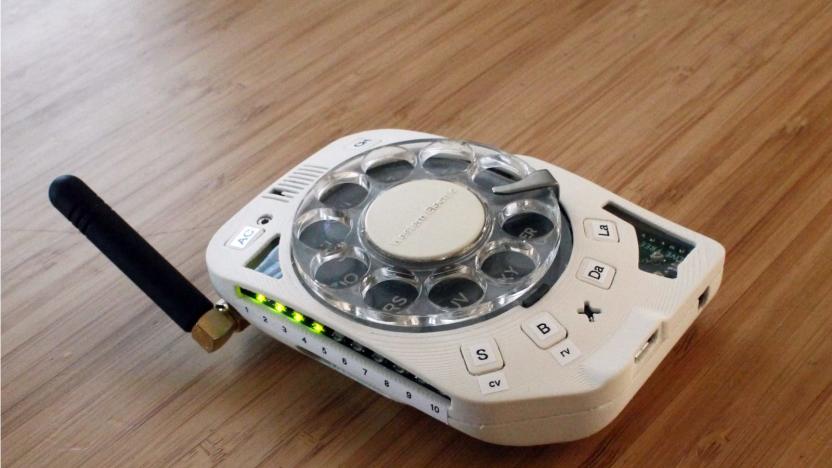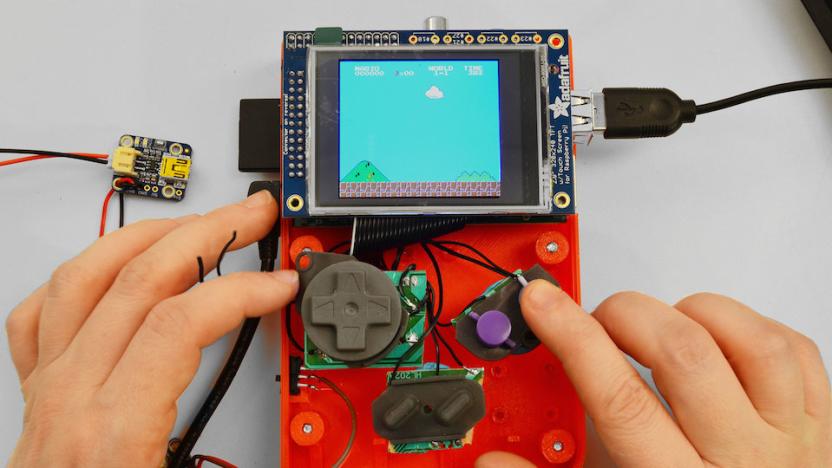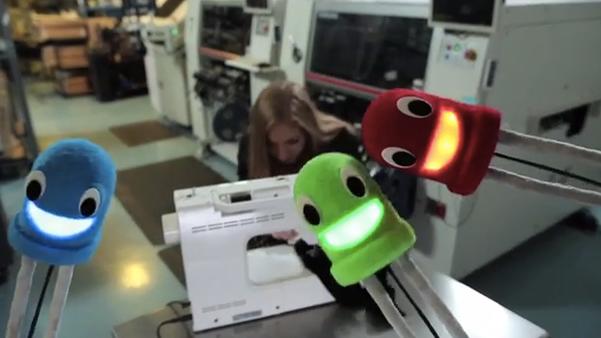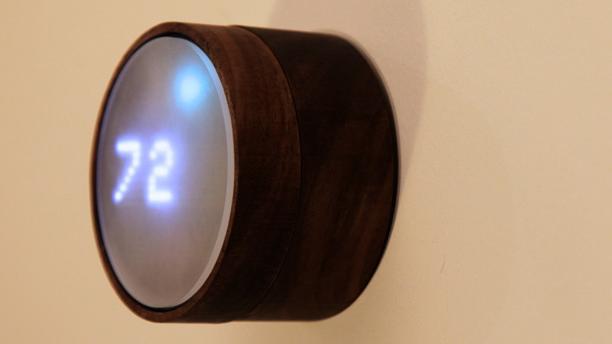adafruit
Latest

You can build the tiny XFM2 synth for under $100
Miniature electronics kits like the Raspberry Pi have ushered in a new generation of DIY tinkerers. And while most of these builds emulate classic gaming systems, there are plenty of other possibilities. Futur3soundz, for example, designed a synthesizer around an FPGA chip and an Adafruit digital-to-analog converter. The company says that the components can all be purchased for under $100. And while the synth has few on-board controls, it has an extensive MIDI integration, so musicians can control parameters from their keyboards, making it a viable piece of bedroom studio gear.

You can make your own rotary cellphone
As convenient as modern cellphones are, there's a certain charm to spinning an old-fashioned rotary dial to make a call -- and now, there's a cellphone that caters to that nostalgia. Brookhaven National Lab engineer Justine Haupt has developed a rotary cellphone that's not only functional, but available to make with the help of a $240 do-it-yourself kit. It's effectively a throwback to the days when phones were for calling and nothing else, plus a few present-day creature comforts.

Adapter turns power wheelchairs into Xbox controllers
The Xbox Adaptive Controller already makes gaming more accessible if you're in a wheelchair, but wouldn't it be better if you could use the wheelchair itself as a controller? You can now. AbleGamers Charity has unveiled a Freedom Wing Adapter that lets you use the joystick on a power wheelchair as an Xbox One controller. The design revolves around the combination of an adapter board and an Adafruit Feather M4 that translates the input from the joystick into commands the Adaptive Controller can understand.

Apps and gadgets for the 'Blade Runner' future we didn’t ask for
Punks, monks and Harrison Ford running scared through a poisonous cityscape were just a few of the details that made the original Blade Runner feel like its environment was a standalone character in the film. It felt as alien and familiar as the way we live today, with an environment turning against us, a government that couldn't care less and a corporate ruling class that would make the Tyrell Corporation jealous. The dystopian world of Blade Runner felt like it had naturally come to be. Unlike the version of Blade Runner we seem to be living in now, which feels like someone threw a switch at New Year's, and surprise, we're living in hell. Suddenly we have to catch up to living in dystopian fiction really fast, lest we die from fires, hurricanes, connected Nazis or nuclear war. So it's probably best that we use every bit of tech to our advantage so we make it to the next noodle bar, as it were.

The enduring myth of the hacker boy-band
Last week, Wired magazine published a sprawling feature on a group of young hackers the magazine claimed would "make us or break us" with their "exceptional talent." The article fawningly profiled each member of a group of Northeastern University college students who would "soon dominate technology -- and shape our future."

Six gifts for your paranoid friends and family
It pays to be paranoid in a time of rampant breaches, social media account extortion, identity theft, fake security products, ransomware, and hack attacks on all. That's why we've put together a gift guide for those among us who don't want to find out they have a security issue the hard way. Typically that would include things like VPN subscriptions or password manager recommendations, but that's no fun when it comes time for everyone to open their presents. That's why we've selected six sweet gadgets that'll protect the privacy and security of those you care about. Carefully screened to keep out the "security snake oil" products flooding the gadget market, our picks have been selected with a keen eye on things that actually work to fight attacks that actually happen.

Introducing the world's smallest way to play 'Donkey Kong'
Once upon a time, video games like Pac-Man and Donkey Kong were the absolute height of entertainment technology, imperfect pixels packed into six-foot-tall cabinets in arcades and pizza shops around the world. Now, those same games run on a machine that fits inside a teacup. Adafruit tinkerer Phillip Burgess created the world's smallest Multiple Arcade Machine Emulator cabinet using a Raspberry Pi Zero computer, 0.96 inch RGB OLED displays and an audio amplifier. It's fully playable and totally adorable.

Microsoft kit helps you run Windows 10 on a Raspberry Pi
Sure, it's no secret that you can run Windows 10 on a tiny Raspberry Pi 2, but actually doing that could prove to be a challenge. What parts do you need? And what do you do with it when you're ready? That's where Microsoft and Adafruit think they can help. They've released a Windows IoT Core Starter Kit that gives you everything you need to get going, including an SD card preloaded with Windows 10 IoT Core and the tools you need (both hardware and software) to start on some projects. It'll cost you $115 if you need a Raspberry Pi 2 at the same time, and $75 if you already have one sitting around. That's a lot of money to spend on such a modest device, but it might pay off if you'd like to spend more time creating clever machines than searching forums for help.

14 ingenious hacks for problems you didn't know you had
People can be crazy, yo. But where there's a will, there's a way that can lead to all sorts of fantastic oddities in the gadget world. Today's community of hackers, makers and DIY fanatics oftentimes work together to find solutions to problems we didn't know we had. They develop innovative products (without all that Kickstarter/Indiegogo hoopla) and often provide open-source instructions for anyone with more can-do attitude than cash. In honor of these ambitious gadget hackers, we've highlighted a few of the more interesting projects from over the years, ranging from the practical to the party starter. [Image: Ruiz Brothers via Adafruit]

When makers festively daydream, they're accompanied by singing LEDs
"... Dangerous torches with pages of rules These are a few of my favorite tools" Time to put the soldering iron down, Becky.

Adafruit's Becky Stern knows why we don't have stylish wearables yet
Becky Stern is probably the world's foremost expert in do-it-yourself wearable technology, which is why we felt compelled to pick her brain at Expand. Adafruit's director of wearables believes that the different languages that technology and fashion companies explains why we've yet to see a truly stylish wearable. She didn't have many kind things to say about the Moto 360, either, since she carries the disassembled hardware in a Ziploc bag around with her. It's not all doom and gloom, however, since the smartphone revolution has made high-end technology cheap enough for everyone to use. That's part of Stern's mission to teach everyone how to build their own GPS trackers, light-up hats and, most famously of all, TV-deactivating jackets. On that subject, it's the infamous TV-B-Gone hardware that she'd most like to see appear in a next-generation smartwatch so she's got a way to discreetly turn off barroom TVs without attracting attention. If you'd like to be inspired to build yourself some cool technology, you can watch the full video, and keep your eyes pointed toward Engadget for even more cool interviews over the next few days.

Five questions for Becky Stern, director of wearables for Adafruit
We've all heard of Google Glass. And smartwatches, and fitness bands, and gadgets that form some sort of combination thereof. But have you considered a skirt with embedded sensors? How about a purse, or a pair of socks? While a few companies, like Ralph Lauren, are dabbling in high-tech clothes, Becky Stern has been tinkering in the space for nearly a decade. As the director of wearables for the DIY electronics site Adafruit, she hosts weekly instructional videos on how to build your own wearables, and also stars in a YouTube show on the subject. We'll be sitting down with her at our free Expand event on November 7th, where we'll talk about the do's and don'ts of wearable tech, with a nod toward some of the more unusual things you can do with sensors. (Fine, fine, we'll touch on Android Wear and the Apple Watch too, if it makes you happy.) To whet your appetite, here's a short Q&A with Stern, and sound off in the comments if you think there's anything else we should ask.

DARPA head joins the list of speakers at Engadget Expand!
Fall's nearly here and so is the next Engadget Expand event. On November 7th and 8th, we'll once again take over New York City's Javits Center North to let you experience the future of technology and hear from the leading minds in the industry.

Here's how you make your own 3D-printed virtual reality goggles
So you couldn't get your hands on a nice virtual reality headset like the Oculus Rift, but you'd still like something a little fancier than a cardboard display. Are you out of luck? Not if Noe Ruiz has anything to say about it. He has posted instructions at Adafruit for do-it-yourself 3D-printed goggles that can be used for either VR or as a simple wearable screen. The design mates an Arduino Micro mini computer with a display, a motion sensor and lenses; the 3D printing both adds a level of polish and lets you tailor the fit to your cranium. This definitely isn't the cheapest project (about $231 in parts) or the easiest, but it will give you head-tracking VR without having to wait for Oculus, Samsung or Sony to put out finished devices of their own. If you're up to the challenge, you'll find everything you need at the source link. [Image credit: Noe Ruiz]

RJD2 will join us at our free Engadget Expand event in NYC!
On November 7th and 8th, Engadget Expand heads back to New York City's Javits Center and this time around, admission is free! And if the Big Apple isn't where you'll be that weekend, no sweat -- we'll keep you updated with live streams from the stage and dispatches from the show floor. Now that we've got your attention (hopefully), let's experience the future of technology together, shall we?

Spark shows how to build a Nest-like, open source thermostat
Wish you'd had the foresight to build the Nest thermostat and get Google's attention? You can't travel back in time, but Spark may give you the next best thing. It just posted a walkthrough showing how to build a smart thermostat of your own. The device centers around both the company's WiFi-equipped Spark Core as well as off-the-shelf displays and sensors from Adafruit, Honeywell and Panasonic. Its software won't compete with anything from Nest, but you can both change the temperature and view historical data from most any modern web browser. More importantly, it's open source -- you can program your own features or simply learn how things tick. While Spark's thermostat won't be an easy DIY project unless you're good with a CNC mill, it's proof that you don't need a vast array of resources to build your own climate controller. [Thanks, Binoy]

Adafruit shows how to make your own touchscreen camera using Raspberry Pi (video)
Do you like the idea of building your own digital camera, but want something a little more sophisticated than Ikea's cardboard cam? Adafruit will be happy to help you out. It has posted instructions for making a point-and-shoot using little more than a Raspberry Pi, its matching camera module and Adafruit's PiTFT touchscreen. The resulting device won't rival any modern point-and-shoot for quality, but it's truly usable -- you can even slap on a WiFi adapter to upload shots to Dropbox. Whatever your experience with DIY photography, you'll find everything you need to know at the source link.

Researchers use alcohol, Arduino and a desk fan to send molecular text messages (video)
Scientists from York University in Toronto are using alcohol as a method for sending text messages. How, exactly? By converting sprays of isopropyl alcohol into binary code, using off-the-shelf components. The researchers used an Arduino Uno board, an Adafruit LCD, a desk fan and a household spray bottle to transmit a short message across a tabletop, via molecular diffusion. In the experiment, the fan pushed bursts of alcoholic mist across a table, where a sensor at the other end measured the alcohol content of the air. From there, the vapor was reassembled into non-binary characters and the phrase was successfully reconstructed. Naturally, the transmitted words were "O Canada." The university says that this chemical form of data transmission could easily be shrunk to the microscopic level and find use in the medical field for targeted drug delivery. Conversely, the system could expand in size and offer communication through sewer systems or be used in search and rescue situations; basically, anywhere that traditional radio signals just won't work.

Live from Expand: All Dressed Up: the State of Wearable Technology
Thanks to products like the Pebble Smart Watch and Google Glass, wearables are all the rage this year. We've pulled together a diverse group of companies from different aspects of the space -- including Adafruit, Narrative and Misfit -- to discuss where wearables are and where they're going. November 9, 2013 2:40:00 PM EST Follow all of Engadget's Expand coverage live from New York City right here!

Adafruit tutorial turns your Raspberry Pi into an ad-blocking WiFi access point
Ads can be a buzzkill, especially when they're so pervasive they become distractions. Luckily, Adafruit has a new tutorial that turns your Raspbery Pi into a WiFi access point that doubles as a mighty ad-blocking machine for any device -- be it an iPad or an Xbox -- that connects to it. All you need is a working internet connection, a Raspberry Pi booting Raspbian, a WiFi adapter, an Ethernet cable and the necessary software (which the tutorial breaks down for you). It should go without saying, but Adafruit also includes a reminder to whitelist the ad-supported sites you frequently visit. Blocking ads might improve your online experience overall, but it's always a good idea to support the people who provide you with free content. To get started, check out the tutorial at the source link below.











